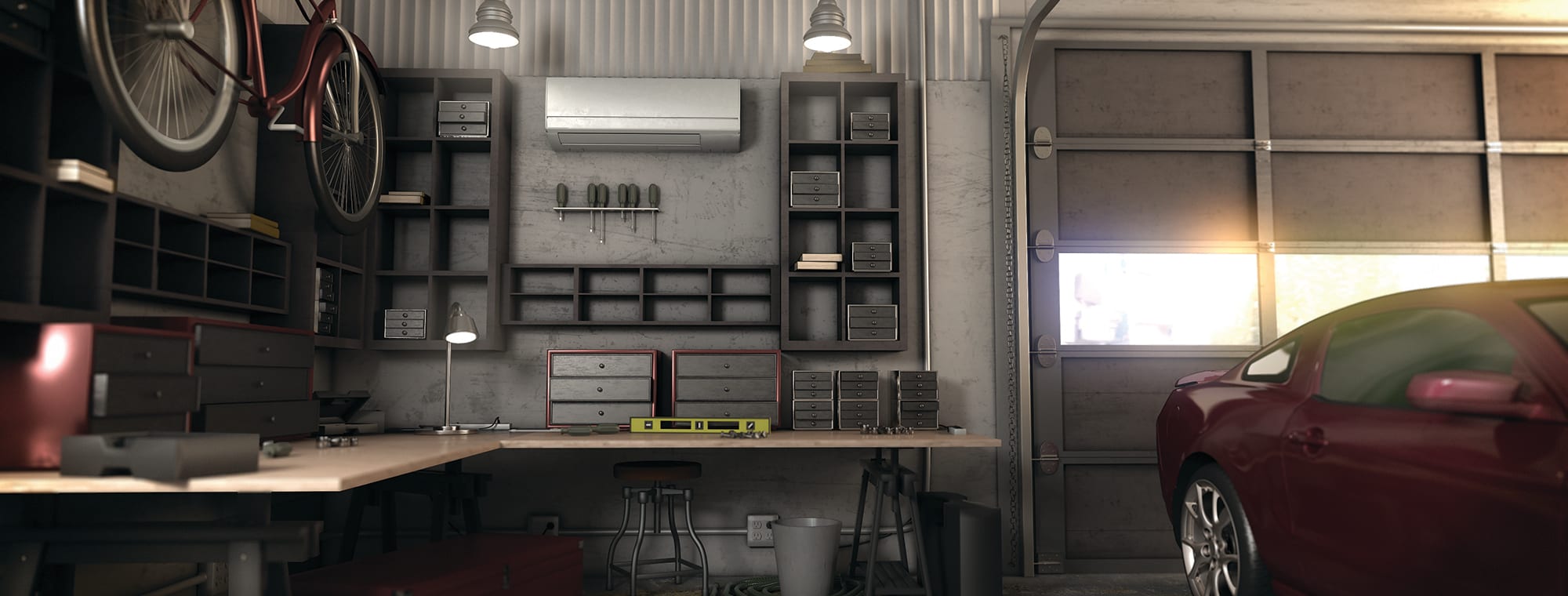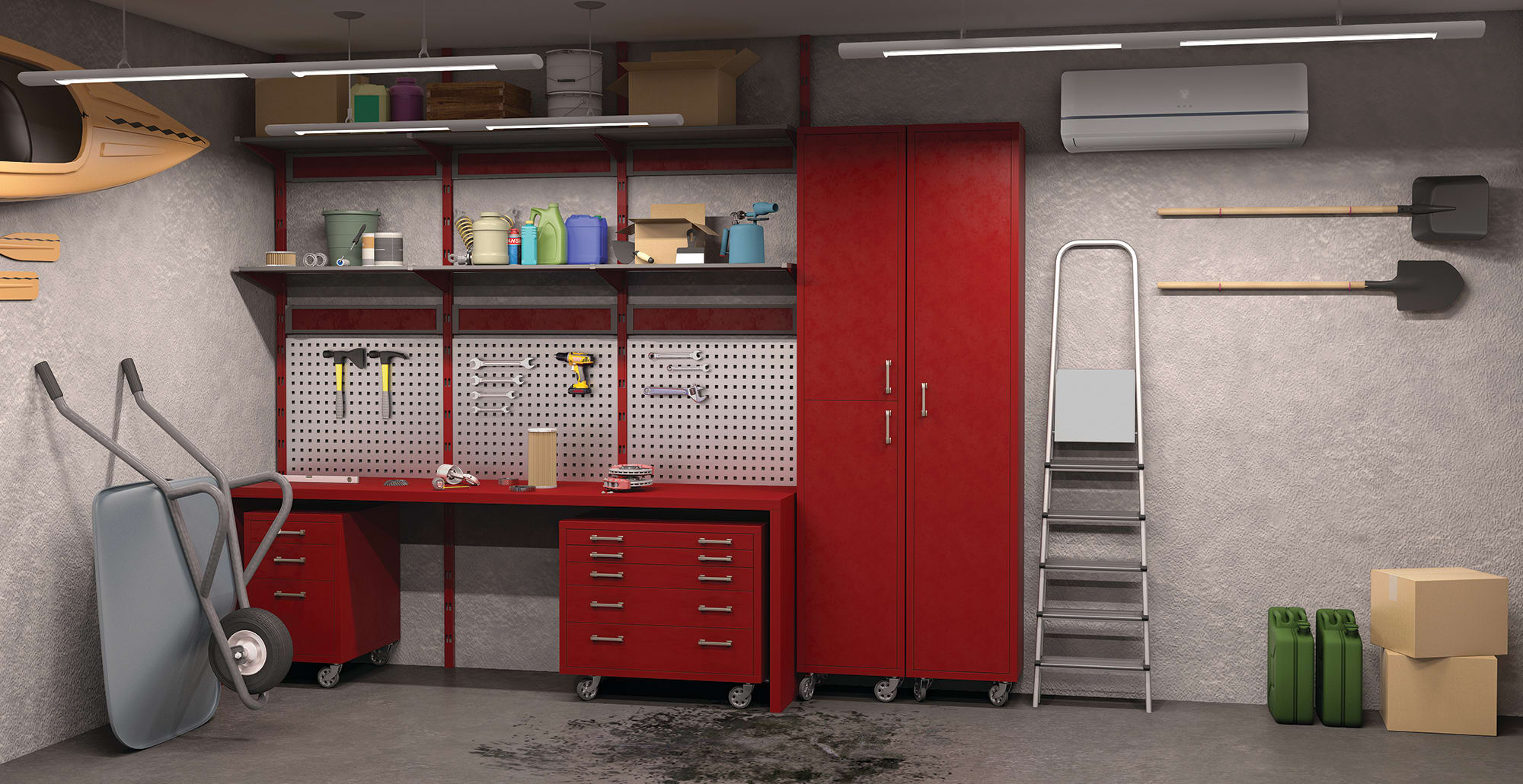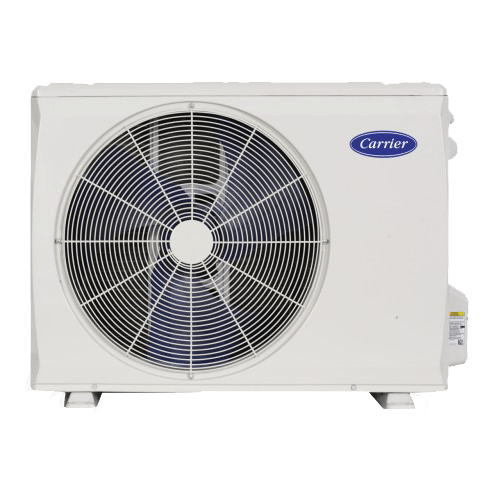Ductless Mini Split for Garage
By Ryan Mayes
A ductless mini split for your garage enables you to use the space beyond just housing your vehicles or your lawn mower. With a number of indoor and outdoor unit options for optimal climate control – high wall, under ceiling, in-ceiling, or console – you can easily find a model that fits your needs. Once it’s installed, you can save money on your utility bills by only using it when you’re using the space.

Choosing a Ductless Air Conditioner for Garage Spaces
When selecting a ductless AC for the garage, several crucial factors come into play to ensure optimal performance and comfort. First and foremost, consider the cooling capacity of the unit, as it should match the size of the garage to efficiently regulate temperature. Energy efficiency is another vital factor, as it not only helps reduce electricity costs but also can help minimize the environmental impact. Additionally, noise levels may be a concern, especially if the garage doubles as a workspace or relaxation area. Durability and ease of maintenance should not be overlooked, ensuring the longevity of the ductless mini-split system. Finally, consulting with a professional to assess the specific needs of the garage space can provide valuable insights for selecting the most suitable ductless air conditioner for the job.

Garage AC Unit Consideration #1: Square Footage and Ceiling Height
When determining the ideal ductless mini-split unit for a garage, the square footage and ceiling height play pivotal roles in achieving efficient cooling. The rule of thumb is that larger spaces require higher cooling capacities. For instance, a 12,000 BTU (British Thermal Units) unit is generally suitable for smaller garages, while larger spaces or those with higher ceilings may benefit from an 18,000 BTU unit. The square footage helps gauge the unit's cooling capacity, ensuring it can effectively reach and maintain the desired temperature. Wall mounted air conditioners are often preferred for their space-saving design and ease of installation, making them a practical choice for garages where floor space may be limited. Therefore, when asking, " How big of a mini-split do I need? " it's crucial to consider both the square footage and ceiling height to select a unit that meets the specific requirements of the garage space.
Effectively cool and heat with a ductless mini split for garage spaces, without the hassle of window units, portable air conditioners or space heaters.
Ductless systems can also be mixed and matched based on the specific needs of each separate space in your home, allowing you to personalize your comfort no matter where you are in your home. High wall units can be paired with ducted, console and cassette units, hooked up to a single outdoor compressor for multi-zone systems. Or, connect one indoor unit with the outdoor unit for a single-zone system that concentrates on one specific area.
Garage AC Unit Consideration #2: Insulation
Garages, by nature, tend to be less insulated compared to the main living spaces of a home. The lack of insulation means it might be more difficult to maintain a consistent and comfortable temperature within the garage, especially during extreme weather conditions. Additionally, the presence of gaps along doors and potential air leaks can further exacerbate energy inefficiency. Before installing a ductless mini-split unit, it's advisable to address these insulation concerns. Adding insulation to the walls and ceiling of the garage can significantly improve energy retention, making the cooling process more effective and reducing the load on the mini-split unit. Sealing gaps and insulating doors can also contribute to a more airtight space, optimizing the unit's performance and potentially lowering energy costs in the long run. Taking these proactive measures ensures that the ductless AC operates at its best, providing efficient and cost-effective climate control for the garage.
Garage AC Unit Consideration #3: Use of Space
The frequency of use for the garage space is a crucial factor to consider when deciding on the on a ductless mini-split unit. If the garage serves as a frequently utilized workspace or living area, maintaining a consistent temperature becomes more critical. In such cases, it's recommended to set the mini-split unit to a moderate temperature during periods of regular use to ensure a comfortable environment without putting excessive strain on the system. On the other hand, if the garage is used only occasionally or seasonally, adjusting the temperature settings or even turning off the unit when not in use can contribute to energy savings. By aligning the mini-split usage with the actual needs of the space, you can strike a balance between comfort and energy efficiency, optimizing the performance and longevity of the system.
Hot and Cold Spots
Hot and cold spots in homes with ducted systems are common for a number of reasons:
- Placement, number and size of windows in a room
- Quality of ductwork and resulting airflow
- Heat-generating appliances like an oven or clothes dryer
- Location, such as basement, main floor or second floor
- Distance from the indoor air handler unit (typically, the furnace or fan coil)
- Outdoor influences such as shade trees
For rooms with hot or cold spots, ductless HVAC systems can provide more complete control, targeting those areas with uneven temperatures for more consistent comfort throughout your whole home. Traditional ducted/forced air HVAC systems rely on airflow throughout the home to distribute heating and cooling comfort. Learn more about ductless mini split vs central air.
Zoned systems with individual control over temperature in different areas can solve these issues, but retrofitting a ducted system for zoning can be expensive and not always possible. A Carrier ductless HVAC system can solve many of these issues by putting a heating or cooling source in each area of concern, either as a replacement for or supplement to your existing central HVAC system. Need help with a new ductless mini split system?
Get help from a local Carrier Expert .

A mini split for basement and attic spaces is exactly what you need to ensure home comfort. Ductless works best in rooms with tight spaces and/or hard-to-control temperatures. Inverter technology allows the system to run longer cycles at lower fan speeds, which helps the system dehumidify while cooling. Less humidity means more comfort – even at higher temperatures in attics – and better control of comfort in lower natural-light conditions typical in basements.
Ductless Air Conditioner for Sunroom
In a room with less wall space to hang a unit (as in a sunroom with mostly glass walls), a console ductless indoor unit can be installed, detached from the wall on feet, allowing for lower-impact installation. This type of sunroom heating and cooling unit installation should be faster, easier and less costly because your contractor will not have to run ductwork from an existing system.
Installing a ductless air conditioner for mini split unit in a sunroom is an energy-efficient choice as well. With inverter-controlled variable-speed compressor technology, Carrier ductless heating and cooling units offer very high efficiency models while delivering even, consistent comfort. Plus, you can conserve energy by only heating or cooling your sunroom when it is in use. Learn more about how you can heat or cool your sunroom by contacting a certified Carrier ductless expert.
Ductless Air Conditioner for Basement
Installing a ductless air conditioner for basement presents unique challenges that require careful consideration. One key aspect is the size and layout of the basement, which can impact the efficiency of the ductless mini-split system. Unlike traditional HVAC systems, ductless units rely on individual air handlers placed strategically throughout the space. Ensuring proper air distribution in larger basements or those with multiple rooms may pose a challenge, requiring a thoughtful placement plan to achieve optimal cooling.
Additionally, basement environments often have specific temperature and humidity concerns. Basements tend to be cooler than the rest of the house, and moisture levels may vary. It's essential to select a ductless mini-split system that offers effective temperature control and dehumidification features to create a comfortable and healthy living environment. Adequate insulation is another consideration, as basements may require additional insulation to maintain the desired temperature and prevent energy loss. Addressing these challenges ensures that a ductless air conditioner for a basement operates efficiently, providing consistent comfort throughout the space.

Ductless AC Options for Older Homes
Offering easy and flexible installation options and improved energy efficiency, Carrier ductless systems are an excellent air conditioning option for older homes. Older homes weren’t built to accommodate the ductwork that goes along with standard modern heating and air conditioning systems. Learn more about HVAC options for older houses.
Carrier ductless air conditioners systems allow you to preserve the integrity of your home’s historic architecture without having to carve out spaces for ducts and vents. High wall units or under ceiling units can be installed directly to existing surfaces, eliminating the need to patch, plaster or paint. Or, for low-profile home comfort, console units can be installed into the wall itself without disrupting the formal décor of spaces like dining rooms.
Older homes tend to be less energy efficient than newer ones. Carrier ductless heating and cooling systems can help offset the energy loss of an older home because they offer high-efficiency system options. With the flexibility of targeting one living space with a single-zone system, or several different spaces with a multi-zone system, you can save on utility bills by directing comfort to the areas that need it without wasting energy on areas that don’t. Learn about single vs 2-zone ductless mini splits.
Looking For A Garage AC Unit? Choose a Carrier Ductless Mini Split
Ductless heating and cooling for garage spaces or other rooms can allow you to make the best use of these often less used spaces. Carrier® ductless air conditioner systems can be easily integrated into any home, no matter the demands of the space. With endless ductless applications and configuration options, ductless mini split air conditioners and ductless mini split heat pumps work where traditional HVAC doesn’t, and they offer easy solutions for rooms without ductwork or with hot or cold spots, supplementing areas that conventional heating or cooling systems don’t adequately keep comfortable, like garage spaces. With smaller system sizing requirements and several ENERGY STAR® models available, a Carrier ductless system can help save big on heating and cooling bills as well.
Carrier ductless mini split systems also allow for a long refrigerant line between outdoor condenser unit and indoor units, with only a small hole in the wall required to install a ductless AC. This allows more options for unobtrusive installation, so you can enjoy spending time outside on your deck or inside in your living room in peace and quiet. Click the following link to learn more details about how to install a mini split . Look no further than Carrier when you're in the market for a garage ac unit.

Connect With A Carrier Dealer On Ductless Mini Split AC For Garage
To get a quote on a new ductless heating and cooling system for your garage, contact a local Carrier expert today. Carrier dealers have the expertise to recommend the right system based on your needs and preferences and get your space more comfortable.

Frequently Asked Questions About Air Conditioner For Garage
Whether it's worth putting AC in a garage depends on your needs and how you use the space. If you use the garage as a workshop, gym, or additional living space, AC can make it much more comfortable. Cooling can also help protect stored items from heat damage, especially electronics, chemicals, and tools.
Explore Carrier Garage Air Conditioners
Choosing a Carrier garage air conditioner ensures reliable cooling, energy efficiency, and durable performance in tough environments. Designed to handle temperature fluctuations, Carrier units provide consistent comfort while maintaining efficiency. With expert installation and support from Carrier dealers, you get a high-quality solution tailored to your garage’s needs.
Single-zone system with up to 35.1 SEER2 and 30 HSPF2 for premium energy savings.
Single-zone system with up to 26 SEER2 and 13.9 HSPF2 for premium energy savings.
Learn More About Garage Air Conditioners, or Ductless Mini Splits
- Read about the cost of ductless mini splits
- What is a ductless mini split?
- Are mini splits efficient?
- How long do mini splits last?
- Find out more about ductless mini split maintenance
- Discover mini split pros and cons
- Learn about the different types of ductless heating and cooling system types




